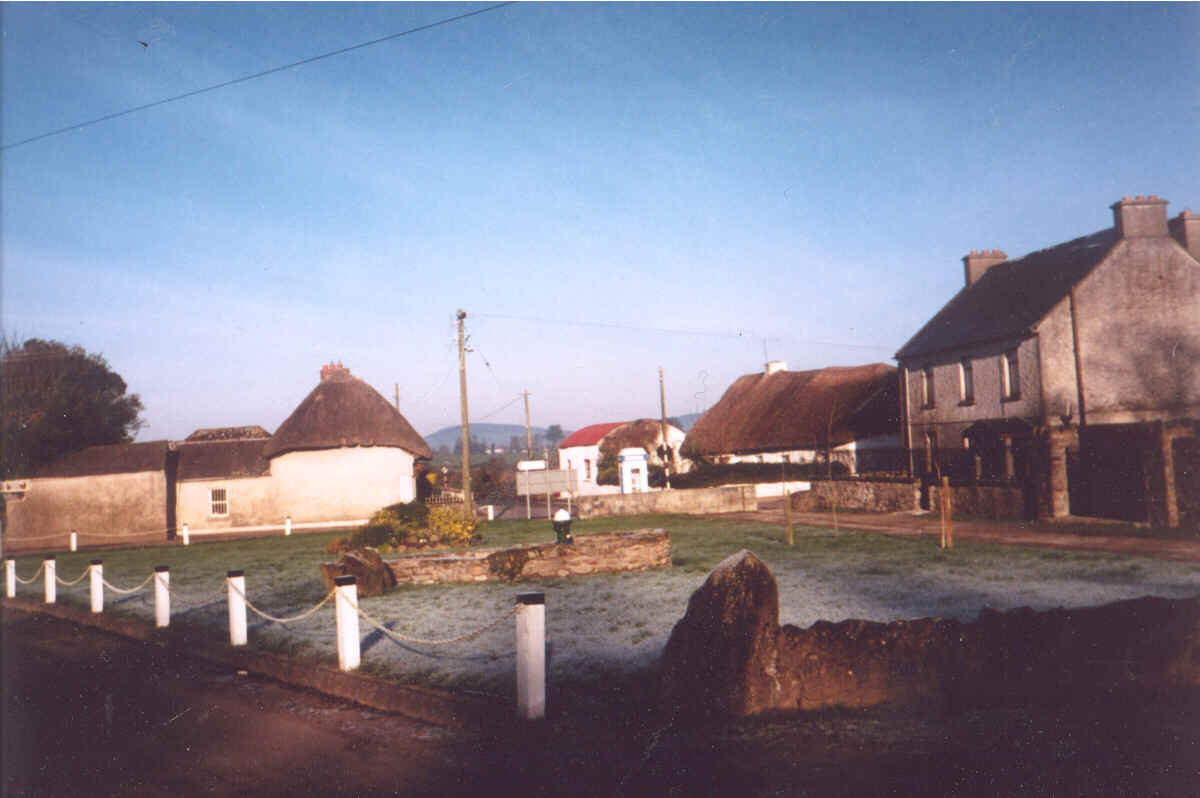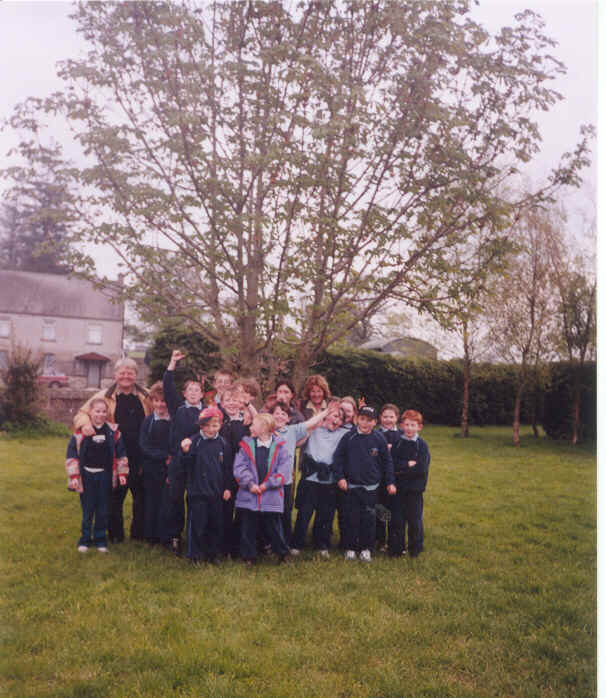
About Ballycahill

Ballycahill is situated four miles west of Thurles on the Newport Road to Limerick. It is a beautiful scenic village with a well-landscaped green and many mature trees. Pride of the village are two thatched cottages. These are preserved and give an old-world look to the village. A small grove of trees provide background to the village scene. In the centre of the village is the school which has many developing trees and shrubs on its grounds. Many of them have been planted since 1990.

Studying the environment is an important part of the school curriculum. A wildlife garden was planted and as a project we landscaped the school grounds with wildlife friendly trees and shrubs. In thecentre of one green area are two fine developing trees, a Horse Chestnut grown by pupils from a conker in October 1987 and an Oak grown from an acorn also planted in November of that year. The Horse Chestnut was the subject of our project which recently won the national award in the Esso Schools Wildlife Competition.
Ballycahill gets its name from the Irish 'Bealach Achaille' which means the 'Way of the Rock'. This refers to the road that connects Cashel to Nenagh. The road crosses a high limestone hill that rises to 150 metres above sea level. This is still called the 'Rock'. A stone near the green shows a bench mark for map makers and also has a number 10 on it because we are 10 miles from Cashel. The underlying rock in our area is carboniferous limestone . It was lid down at the bottom of a shallow sea about 275 million years ago. Limestone was formed from the bodies of millions of dead sea animals. As millions of creatures died their remains fell to the bottom and layer upon layer was built up. Eventually after millions of years, limestone rock was formed. Even today the prints of many creatures' bodies can be seen in the limestone in the form of fossils. These fossils tell us a great deal about the history of the world. The rock in Ballycahill is known as Waulsortian limestone.
